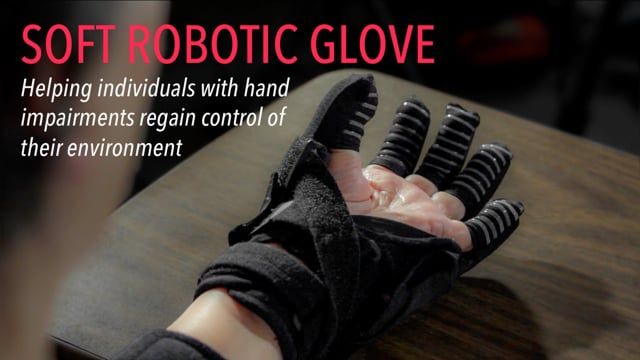Jul 16, 2021
Watch a 3D-printed robotic hand play Nintendo
Posted by Dan Kummer in categories: cyborgs, robotics/AI
Using “soft robotics,” engineers at the University of Maryland built a prosthesis powered by water and air.

Using “soft robotics,” engineers at the University of Maryland built a prosthesis powered by water and air.
NIH will award nearly $80 million to support the establishment of the Mendelian Genomics Research Consortium and the development of novel methods and approaches that help researchers identify the genetic causes of single-gene diseases.
Sorry, we’re having trouble playing this video.
Learn More.
The New York Times.
“Emerging markets have no need to build up huge electrical infrastructure based on fossil fuels. Instead, they are leapfrogging this stage and meeting growth in demand by deploying clean energy systems — such as wind and solar — with huge potential to boost economic development and bring electricity to millions more people.”
Fossil fuel electricity generation has peaked worldwide as emerging markets seize the opportunities of low-cost renewables, according to a report published this week by India’s Council on Energy, Environment and Water (CEEW) and the financial think tank Carbon Tracker.
Renewables are already the cheapest source of new electricity additions in 90% of the world, the report notes. Emerging markets (non-OECD nations plus Chile, Colombia, Mexico and Costa Rica) therefore have no need to build up huge electrical infrastructure based on fossil fuels. Instead, they are leapfrogging this stage and meeting growth in demand by deploying clean energy systems – such as wind and solar – with huge potential to boost economic development and bring electricity to millions more people.
Researchers at ETH Zurich have trapped a tiny sphere measuring a hundred nanometres using laser light and slowed down its motion to the lowest quantum mechanical state. This technique could help researchers to study quantum effects in macroscopic objects and build extremely sensitive sensors.
Why can atoms or elementary particles behave like waves according to quantum physics, which allows them to be in several places at the same time? And why does everything we see around us obviously obey the laws of classical physics, where such a phenomenon is impossible? In recent years, researchers have coaxed larger and larger objects into behaving quantum mechanically. One consequence of this is that, when passing through a double slit, these objects form an interference pattern that is characteristic of waves.
Up to now, this could be achieved with molecules consisting of a few thousand atoms. However, physicists hope one day to be able to observe such quantum effects with properly macroscopic objects. Lukas Novotny, professor of photonics, and his collaborators at the Department of Information Technology and Electrical Engineering at ETH Zurich have now made a crucial step in that direction. Their results were recently published in the scientific journal Nature.
Circa 2014
India looks like the future. Even as China and other Asian nations contract, economically or otherwise, India continues to expand, with…
The COVID-19 pandemic is far from over. In fact, when it comes to the rise of new variants, the worst may still be yet to come.
That’s according to World Health Organization (WHO), who spelled out a strong warning this week to countries hoping to loosen their social distancing measures amidst rising COVID-19 cases and deaths.
“The Committee has expressed concern that the pandemic is being mischaracterized as coming to an end when it is nowhere near finished,” Dr Tedros Adhanom Ghebreyesus, WHO Director-General, said at a media briefing on July 15.
Lambda, an AI infrastructure company, this week announced it raised $15 million in a venture funding round from 1517, Gradient Ventures, Razer, Bloomberg Beta, Georges Harik, and others, plus a $9.5 million debt facility. The $24.5 million investment brings the company’s total raised to $28.5 million, following an earlier $4 million seed tranche.
In 2013, San Francisco, California-based Lambda controversially launched a facial recognition API for developers working on apps for Google Glass, Google’s ill-fated heads-up augmented reality display. The API — which soon expanded to other platforms — enabled apps to do things like “remember this face” and “find your friends in a crowd,” Lambda CEO Stephen Balaban told TechCrunch at the time. The API has been used by thousands of developers and was, at least at one point, seeing over 5 million API calls per month.
Since then, however, Lambda has pivoted to selling hardware systems designed for AI, machine learning, and deep learning applications. Among these are the TensorBook, a laptop with a dedicated GPU, and a workstation product with up to four desktop-class GPUs for AI training. Lambda also offers servers, including one designed to be shared between teams and a server cluster, called Echelon, that Balaban describes as “datacenter-scale.”
